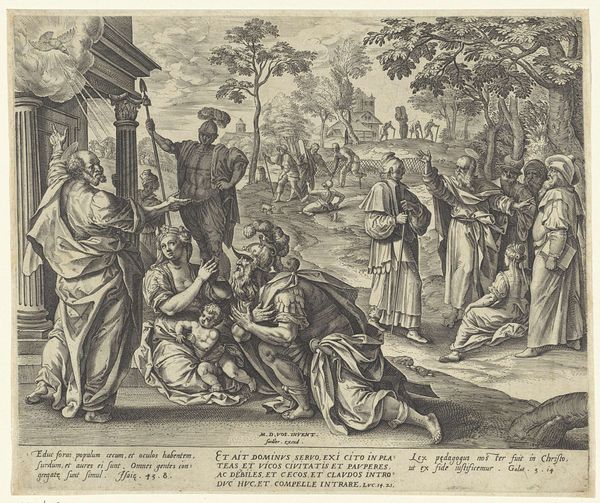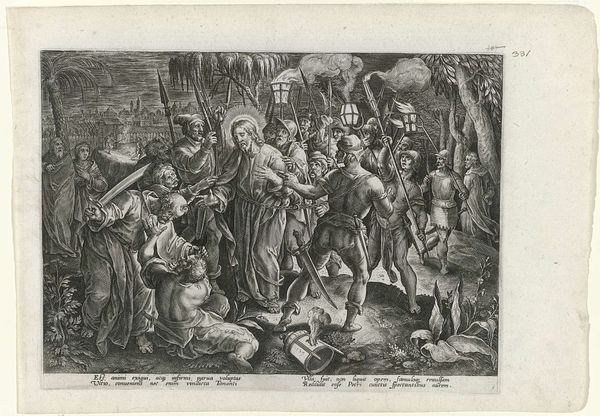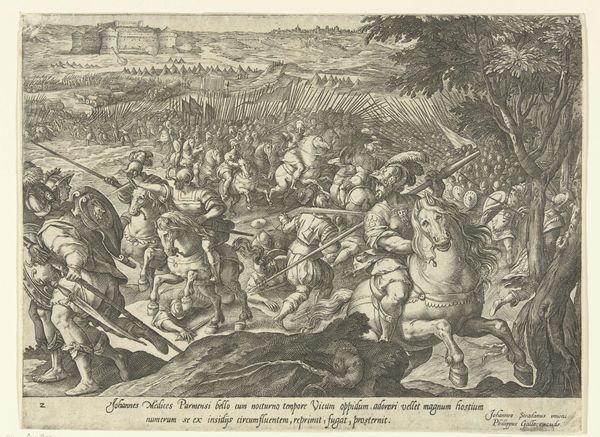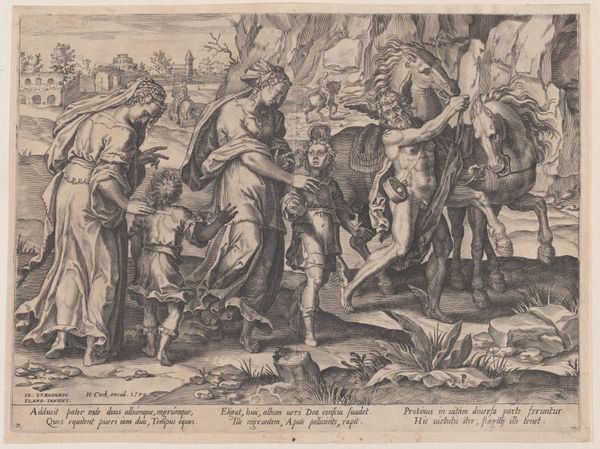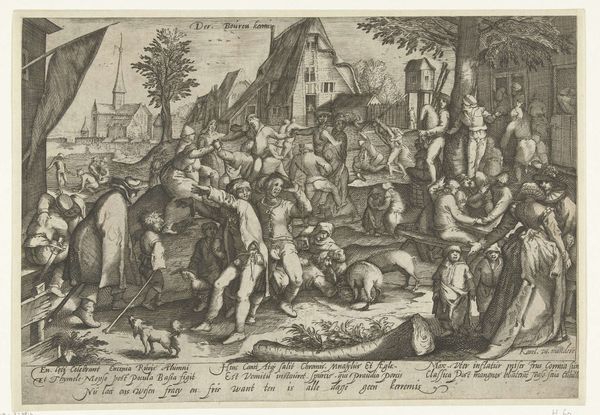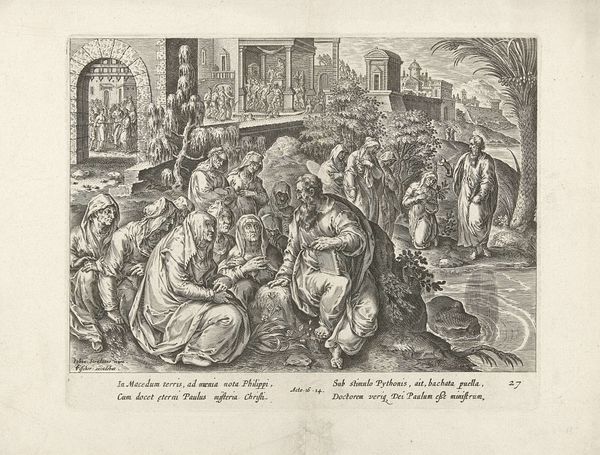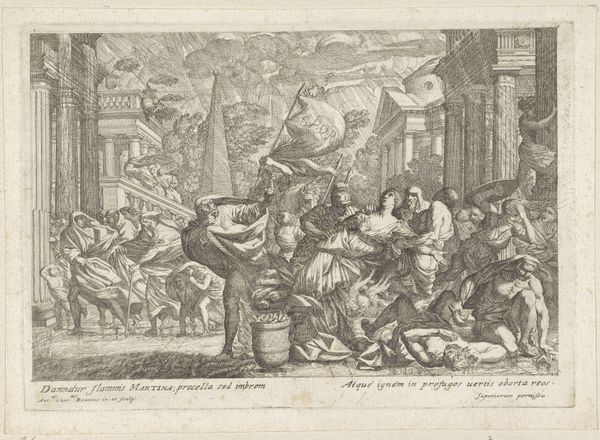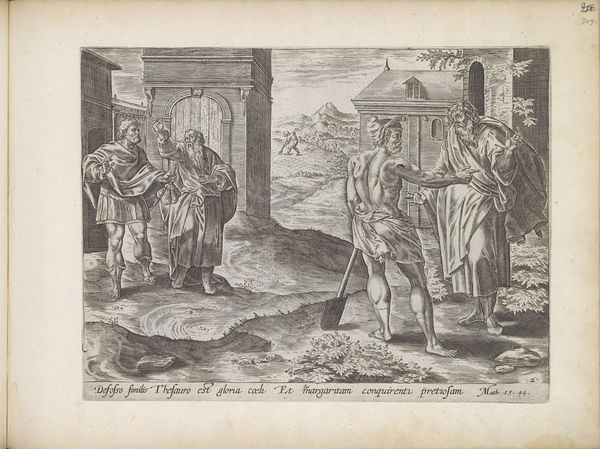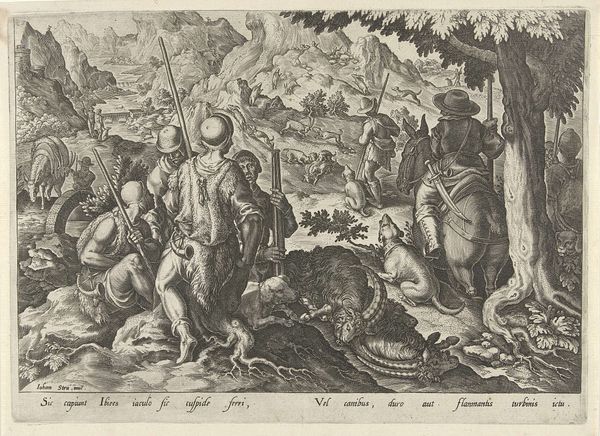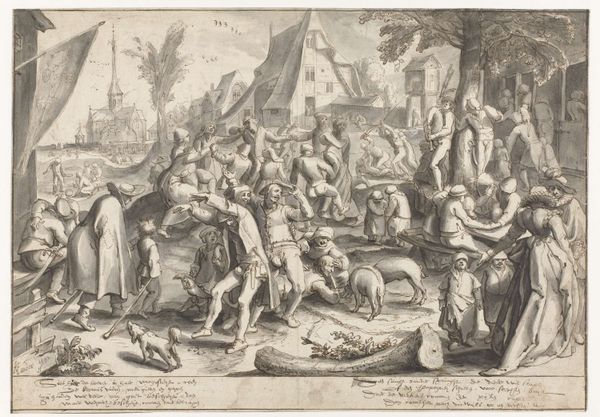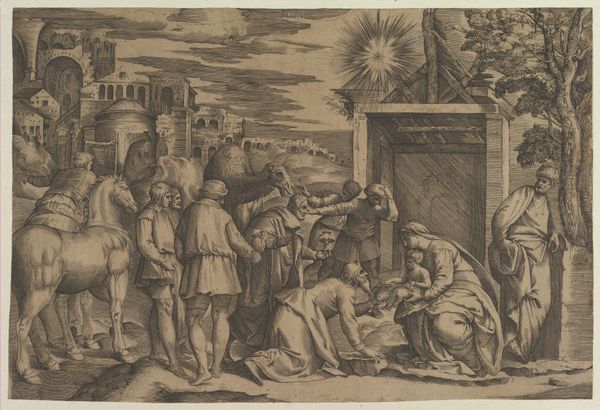
Dimensions: height 196 mm, width 263 mm
Copyright: Rijks Museum: Open Domain
Editor: We’re looking at “Paulus door een adder in de hand gebeten” or “Paul bitten by a viper” by Hendrick Goltzius, made between 1580 and 1584. It's an engraving. I’m struck by the chaos and detail in this small print; it’s almost overwhelming. What do you see in this piece? Curator: The chaos you perceive is, I think, central to the scene. Think about the symbols here. We see Paul, unscathed by the viper’s bite, while the crowd looks on in astonishment. Consider the viper itself - often a symbol of treachery or hidden evil, especially in early Christian iconography. Its failure to harm Paul reinforces the concept of divine protection, doesn’t it? Editor: Absolutely. So the viper represents a challenge, or even evil, that Paul overcomes because of his faith. Is there more to unpack? Curator: I think about how fire also figures prominently; both literally and figuratively. A community is keeping warm around the bonfire and that can relate to themes of faith, resilience, and the triumph over adversity. What kind of cultural continuity do you suppose the artist has in mind? Editor: I suppose it suggests that faith provides warmth and sustenance during hardship, a shared human experience regardless of the specific narrative. Curator: Exactly! These intertwined symbols – the viper, the fire, and Paul’s immunity – work together. They reflect the potent cultural and religious narratives prevalent at the time. What would you conclude? Editor: It’s amazing to consider how an image from the late 16th century can continue to resonate emotionally and culturally today. It also reinforces the lasting importance of storytelling and symbolism to reveal the complex meanings found in this artwork.
Comments
No comments
Be the first to comment and join the conversation on the ultimate creative platform.
